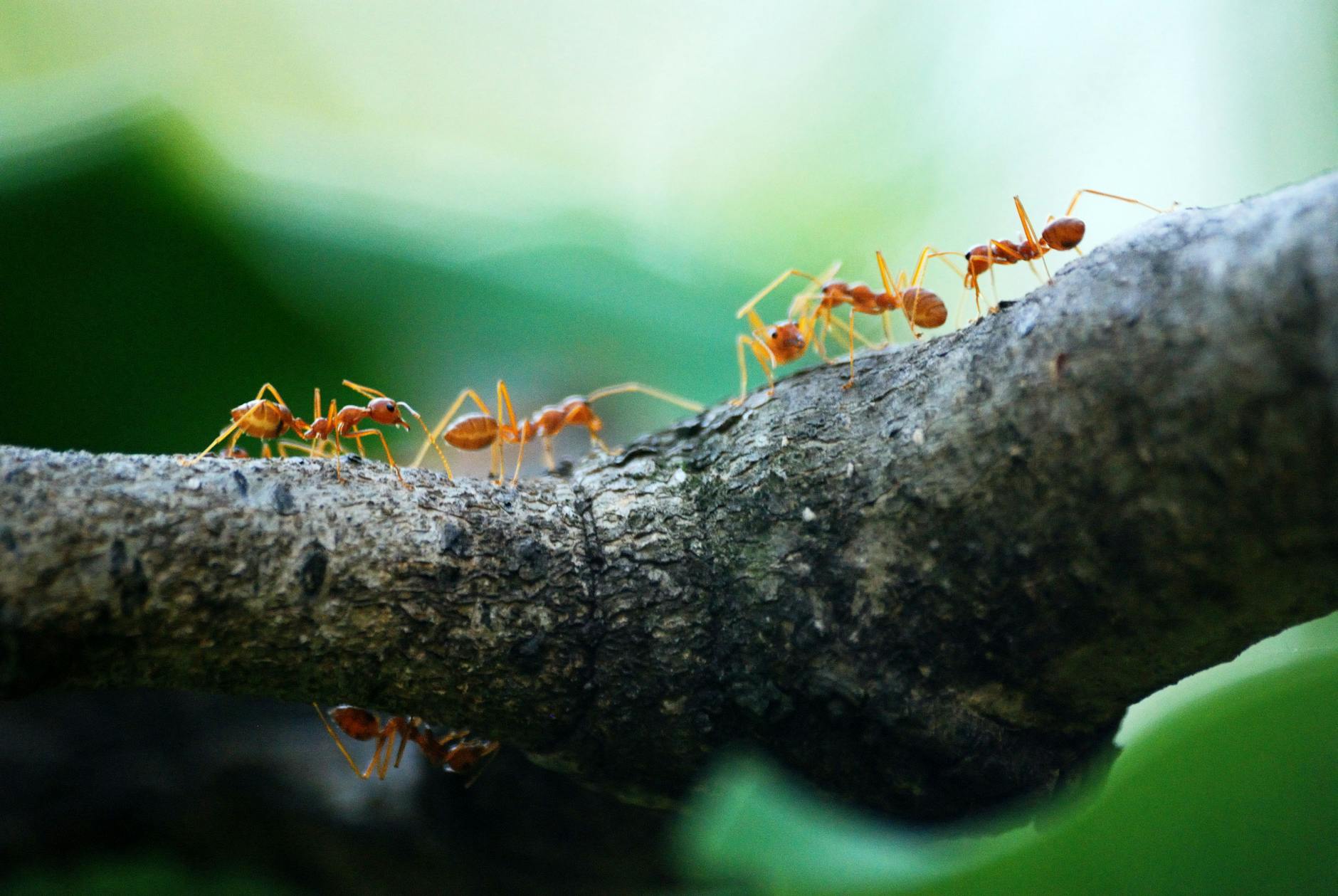Collective nouns enrich our language by providing specific terms for groups of insects, reflecting their behaviors, appearances, and characteristics. These terms not only add precision to our descriptions but also paint vivid pictures of insect gatherings in nature.
Common Collective Nouns for Insects
Ants and Social Insects
A colony, swarm, nest, or army are the primary collective nouns for ants. Each term reflects different aspects of ant behavior:
- Colony: Describes their organized social structure
- Army: Emphasizes their coordinated movement
- Nest: Refers to their dwelling place
- Swarm: Used particularly for flying ants
Bees and Related Species
Bees have several distinctive collective nouns including swarm, hive, and grist. These terms evolved from traditional beekeeping practices and natural observations:
- Swarm: Large moving group of bees
- Hive: Structured community in their home
- Grist: Traditional term for gathered bees
Butterflies and Moths
The most poetic collective nouns belong to butterflies:
- Kaleidoscope: Reflecting their colorful appearance
- Flutter: Describing their movement
- Rabble: Indicating their seemingly chaotic flight patterns
Other Notable Groups
Various insects have unique collective terms that capture their essence[1]:
| Insect | Collective Nouns |
|---|---|
| Flies | Business, Swarm |
| Ladybugs | Loveliness |
| Grasshoppers | Cloud, Plague |
| Dragonflies | Cluster, Flight |
Usage in Context
These collective nouns appear frequently in nature writing and scientific descriptions. For example:
“The kaleidoscope of butterflies transformed the garden into a living rainbow”.
Historical Origins and Evolution
Etymology and Development
The tradition of collective nouns for insects dates back to medieval times, when they were often recorded in “terms of venery” – specialized hunting and natural history vocabulary. Many of these terms emerged from careful observation of insect behavior and social structures.
Cultural Significance
Different cultures have developed their own unique collective nouns for insects, reflecting local traditions and observations:
| Culture | Example Term | Insect Group |
|---|---|---|
| English | Plague | Locusts |
| Japanese | Mure (群れ) | General swarms |
| Sanskrit | Yūtha | Insect colonies |
Scientific Relevance
In Entomology
Professional entomologists use specific terminology when referring to insect groups:
- Aggregation: Technical term for temporary gatherings
- Colony: Permanent social structure
- Brood: Group of developing insects
Behavioral Patterns
Collective nouns often reflect distinct behavioral characteristics:
Social Organization
- Termites form organized colonies with distinct castes
- Wasps create structured nests with hierarchical systems
- Ants operate in coordinated armies during foraging
Seasonal Gatherings
- Butterflies form kaleidoscopes during migration
- Locusts gather in plagues during breeding seasons
- Fireflies create sparkles during mating displays
Literary and Poetic Usage
Writers often employ these collective nouns to create vivid imagery:
“A business of flies descended upon the forgotten fruit, their buzzing a cacophony of tiny wings.”
Practical Applications and Modern Usage
In Nature Writing
Modern nature writers and documentarians use collective nouns to create precise descriptions:
Professional Context
- Scientific journals
- Nature documentaries
- Wildlife photography captions
- Environmental reports
Educational Value
These terms serve important pedagogical purposes:
- Teaching biodiversity
- Enhancing vocabulary
- Understanding insect behavior
- Developing observation skills
Common Misuses and Corrections
Frequent Errors
Some collective nouns are often misapplied:
| Incorrect Usage | Correct Usage |
|---|---|
| Swarm of butterflies | Kaleidoscope of butterflies |
| Group of fireflies | Glimmer of fireflies |
| Bunch of grasshoppers | Cloud of grasshoppers |
Regional Variations
Different English-speaking regions may use varying terms:
British English
- Drift of bees
- Cast of wasps
- Murmuration of flying ants
American English
- Swarm of bees
- Nest of wasps
- Column of flying ants
Seasonal and Environmental Factors
Impact on Group Formation
Insects form different types of groups based on:
- Weather conditions
- Breeding cycles
- Food availability
- Migration patterns
Example Sentences with Collective Nouns
- “A kaleidoscope of monarch butterflies covered the Mexican forest canopy.”
- “The colony of carpenter ants methodically expanded their wooden fortress.”
- “A business of houseflies gathered around the forgotten picnic basket.”
- “The plague of locusts descended upon the wheat fields at sunset.”
- “A loveliness of ladybugs dotted the rose garden with spots of red.”
- “The swarm of honey bees followed their queen to establish a new hive.”
- “A cloud of grasshoppers rose from the disturbed meadow.”
- “The army of fire ants marched in perfect formation across the forest floor.”
- “A flutter of moths circled the porch light.”
- “The nest of paper wasps buzzed with activity in the eaves.”
- “A glimmer of fireflies illuminated the summer evening.”
- “The drift of bumblebees moved lazily among the lavender.”
- “A cluster of dragonflies hovered above the pond’s surface.”
- “The rabble of painted ladies danced through the wildflower meadow.”
- “A cast of hornets defended their paper fortress.”
- “The bike of worker ants efficiently transported food to their nest.”
- “A scourge of mosquitoes emerged from the stagnant water.”
- “The colony of termites silently worked within the old oak tree.”
- “A murmuration of flying ants took to the air after the rain.”
- “The hive of native bees pollinated the entire orchard.”
Key Takeaways
Collective nouns for insects serve multiple purposes in language, from precise scientific description to poetic expression. They reflect both historical observation and modern understanding of insect behavior, while enriching our vocabulary and appreciation for the natural world.
